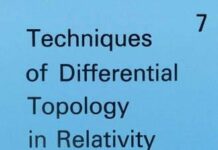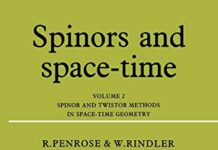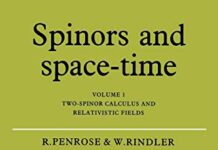
Ebook Info
- Published: 2016
- Number of pages: 887 pages
- Format: PDF
- File Size: 27.54 MB
- Authors: Roger Penrose
Description
For many decades, the proponents of `artificial intelligence’ have maintained that computers will soon be able to do everything that a human can do. In his bestselling work of popular science, Sir Roger Penrose takes us on a fascinating tour through the basic principles of physics, cosmology, mathematics, and philosophy to show that human thinking can never be emulated by a machine.Oxford Landmark Science books are ‘must-read’ classics of modern science writing which have crystallized big ideas, and shaped the way we think.
User’s Reviews
Reviews from Amazon users which were colected at the time this book was published on the website:
⭐Sir Roger Penrose is generally accepted to be a genius of geniuses. Throughout “The Emperor’s New Mind” he convincingly concludes “some of the manifestations of consciousness are demonstrably non-algorithmic,” meaning non-computational. That is, computers properly programmed can ‘compute’ beyond human abilities, but consciousness, particularly human consciousness, is not something that computers can replicate. Not now, and likely not ever.One does not have to look far to find provocateurs in abundance who are filled with hyperbole concerning what computers can do (apparently ANYTHING). Yes, YouTube’s algorithms grow or refine in ‘intelligent’ suggestions as we develop a pattern of selecting videos. Amazon guides us to alternative choices based upon our search specifics (and key words). Google seems to be rather ‘smart’ in its responses to our questions. But the reality is it is all human programming, originally, with sophistication evident simply from internal refining (pseudo automated programing) which, when manifested gives the impression of human levels of intelligence. Penrose, however, is not persuaded that computers will ever replicate the essence of human thought and consciousness.The 356 page book is a masterful treatment of science vs non-science and human vs nonhuman attributes which need to be respected, not discarded in some philosophical junk pile. To accomplish this, Penrose painfully defines and qualifies AI, its algorithmic mechanisms, how mathematics can diverge from reality, how ‘mind’ differs from intelligence, etc. Along the way, he incorporates literary sketches and vignettes to provide entertaining examples for his points, such as Searles Chinese Room, the Turing machine ‘halting problem’ or “The insolubility of Hilbert’s Problem,” and so on.Penrose does use mathematics (predictable, accepting he is in a class of an elite few in the discipline) frequently in the book, but he advises the reader to “spare the ‘poor’ formula a perusing, rather than a comprehending glance, and then press onwards,” and not be deterred by his mathematical proofs here and there in the book. Though not an easy read, it is delightful brain food worth the time invested, even if skipping through a bit may be a justifiable concession.
⭐The Emperor’s New Mind contrasts two theories of mind, that of strong AI and an alternative being somewhat tentatively put forward by Prof. Penrose. The focus of the book is on consciousness. With respect to minds, there are many different perspectives, such as that of free will, and the “mind-body” problem, in the context of Descartes’ philosophy, but Prof. Penrose prefers to confine his discussion to viewpoints of greatest relevance to the nature of consciousness. He views strong AI as the claim that computers can simulate minds, and that sufficiently well-designed and complex computers will display consciousness. He reduces this to the claim that consciousness arises out of algorithmic structures and processes that are sufficiently complex, but feasibly within the possibilities for real computers. His view, contrary to this, is that consciousness is not algorithmic: Computers, at least as they exist now, cannot become conscious, as we humans are. His thesis is two-pronged: One is that a successful theory of mind will depend on the extension of physical theory as we now know it. He illustrates this by showing that a successful theory of quantum gravity might explain consciousness. The other part of his approach depends on Godel’s theorem. As this is a metamathematical result, and its truth recognized outside the bounds of logical and mathematical algorithms, he asserts that this means there are truths we have access to as conscious beings that a computer could not. An extremely important support for this comes from his beliefs as a Platonist. We manifestly have access to an ideal realm where truth can be grasped outside of the structure and processes involved with algorithms. We have direct access to certain truths. It is important to point out that Platonism is almost a requirement for an appreciation of the validity of Godel’s results. Godel himself was a Platonist. A further point is that Platonism gives a great deal of guidance with respect to physics. Prof. Penrose is a mathematician with profound geometric insights, and combining this with Platonism yields powerful arguments that he can adduce about physics. Thus, in a sense, his book is contrasting an Aristotelian perspective, namely that of strong AI, with his brilliant insights derived in part from his Platonic philosophy. A question that arises is how seriously he presents strong AI as an alternative to his point of view: Is it just a straw man? This involves a subjective judgement on the part of the reader. I felt that overall, despite his biases as a result of his beliefs, that he displays a remarkable sharpness of intellect, as well as open mindedness. He is clearly biased toward his point of view, but he also does not treat strong AI as merely a straw man. Considering that he believes an advance in basic physics is necessary to understand consciousness, he must connect our biological knowledge of the brain with quantum gravity. This is a rather difficult connection, to say the least, and it requires an extensive discussion of modern physics to establish a suitable framework for understanding his perspective. He takes us on a splendid tour, extremely exhilarating, of certain important areas of modern physics. His geometric perspective is extremely interesting, and we get a powerful vision of a number of areas of physics that I found to be enlightening, despite the fact that my background in physics is fairly substantial. He keeps his discussion, for the most part, at a level of about a junior physics major in college. Sometimes more extensive knowledge is quite a bit of help. And, because his writing is very clear, an indicator of how important he evidently felt these matters were, even people not trained in physics will be able to derive much from the discussion, although they will not comprehend certain subtleties. This treatment of modern physics is a classic presentation, and certainly makes the book worth reading, even if one finds Prof. Penrose’s ideas about a theory of mind somewhat too speculative. Because so much depends on Godel’s famous work, he also discusses this in depth. In conjunction with this, he provides a good discussion of Turing machines. Overall, I think that this book must be highly recommended. It gives some excellent insights into Prof. Penrose’s perspectives and geometric thinking. Since he is (or was) quite a brilliant mathematician, this insight is a very welcome view into the thinking of one of the premier physicists of the latter part of the twentieth century. Also, the view he presents of modern physics is a treat, and done with remarkable clarity.
⭐It’s rare I get tripped up when buying books but in this case I missed a couple salient details. I was looking for something that was more akin to science prose, a work about computers and minds based on current state of the art. However this book was not written in 2016 as the description notes; it was written in 1989, so just a tad dated. : ) Also there is quite a bit in the way of quantitative tables and callouts in the middle portions of the book.None of this is to say it’s not worthy of your time, only that it may not be what you expect. That said I’ll still keep it as a reference work. Cover paper and printing high quality, actual paper used for the work, not so much, “Pulp Non-Fiction”. 3 stars for that. If you’re going to re-print the work of a famous author, at least do readers the service of using decent quality paper.
⭐The book is in good condition, it doesn’t have any marks but it has visible use though.
⭐Very interesting ideas from one of the brightest minds of our generation. Enjoyed reading every chapter.Interesting and complicated ideas are explained such a way that most would understand.
⭐The impressive list of dust jacket reviewers got it right – be sure read their reviews below the description of the book. The book takes a while to read if you try to understand everything – but take the time to read it through to the end. You will be glad you did. At the core of the book is his really interesting discussion of the ability of artificial intelligence to replicate the human mind – probably the best discussion on this subject that has ever been, or ever will be written. Also the clearest explanation of quantum theory i have ever read. The Kindle version is only $8.73 – this is a terrific deal.
⭐Not going to lie, this book is dull, and badly structured. I’m a Science teacher, and read a lot of Science books. This is one of the worst. I read Stephen Hawkins “A Brief History of Time”, and that starts with something basic, and builds from there to something more challenging. I’m not a huge fan of Richard Dawkins, but he does the same in “The Selfish Gene” or “Rivers Out of Eden”This book assumes the readers have a certain basic knowledge of Physics, and computing, which is fine, but I think he’s started at too high a level. Have you ever heard a story from a friend, where you hear the story, and think “Why’d you start there?” Or “You could have told that story better.” That’s the problem in this book. Penrose, to my mind, wants to tell a story about brains and computers, comparing the two. As someone who knows the comparison he wants to make, and understands the journey he took to there, he can write that story by looking back. That’s fine for him, but for your uninformed Joe Blow, who is uninformed, but not unintelligent, the journey is different he doesn’t know where he’s going, moving forward. You need to tell the story, from the beginning, and not looking back from the end.There are a couple of other things worth noting. First, Penrose doesn’t communicate why we should care about what he was writing about. The book feels clinical, and uninvolving, as a result. Secondly, it can be a bit maths heavy. To me, the last 2 or 3 chapters, when he isn’t trying to drown us in sums, or comparing large blocks of numbers, work best. Finally, the audiobook really doesn’t work on its own. The book can feel a bit homeworky on occasion, and Penrose wants you to participate that way on occasions, and that doesn’t work in an audiobook.
⭐I’ve just finished reading this book for a second time – here are a few observations which might be helpful:- the author is a mathematician rather than a physicist. We are led down various mathematical rabbit holes which have a dubious relevance to objective reality.- I was looking forward to the section on Complex Numbers. Despite the author’s claim that they are “no less real than ‘real’ numbers” I was left totally unconvinced. Certainly they are useful but that doesn’t make them ‘real’.- On many occasions I was left thinking that just because a mathematical construct/model may be interesting & helpful in modelling an aspect of reality it doesn’t mean that nature actually resembles the model. For example in the chapter on Quantum Physics we learn that a particle can be represented by a wavefunction which is a ‘spread-out’ version of the particle. The ‘spread’ reflects the uncertainty in the particle’s position not that the particle really is spread-out (at least that is my interpretation!).- The chapters on the Brain and Conciousness are worth a read but there’s a lot of opinion and anecdotal ‘evidence’. If you are looking for definitive answers you will be disappointed.Despite my critical comments above it’s a good read and would recommend if you’re interested in mathematical concepts.
⭐Often rambling compared to more polished and commercial pop science book, also the maths stuff was tricky for me, but the journey is extraordinary. There’s a reason why every book on quantumPhysics and/or consciousness written after this book cites this book and it’s because it’s a foundational text. Also spotted passages that leapt out at me as the inspiration for several novels I’ve read. Just so many zinging ideas, often coming across as asides and digressions.
⭐I’m giving this book to someone. If I was to take one book to a desert island this would be the one. The first chapter on Turing machines addresses the main theme of the book but it is a bit boring, which makes the difficult bits even more difficult. That is not the author’s fault as Turing machines are boring to the non-expert. After that the book takes off and you are on an exciting tour of mathematics and physics. There are difficult bits but it is deeply interesting and I’m amazed that one man can know all this stuff. However, he is very old and has been working at the forefront of the field for decades, so it is not surprising that he has picked up stuff here and there.
⭐Proves that AI can’t aspire to consciousness using sophisticated maths by a top Oxford mathematician.The thesis of consciousness is entirely compatible with faith.
Keywords
Free Download The Emperor’s New Mind: Concerning Computers, Minds, and the Laws of Physics (Oxford Landmark Science) in PDF format
The Emperor’s New Mind: Concerning Computers, Minds, and the Laws of Physics (Oxford Landmark Science) PDF Free Download
Download The Emperor’s New Mind: Concerning Computers, Minds, and the Laws of Physics (Oxford Landmark Science) 2016 PDF Free
The Emperor’s New Mind: Concerning Computers, Minds, and the Laws of Physics (Oxford Landmark Science) 2016 PDF Free Download
Download The Emperor’s New Mind: Concerning Computers, Minds, and the Laws of Physics (Oxford Landmark Science) PDF
Free Download Ebook The Emperor’s New Mind: Concerning Computers, Minds, and the Laws of Physics (Oxford Landmark Science)



